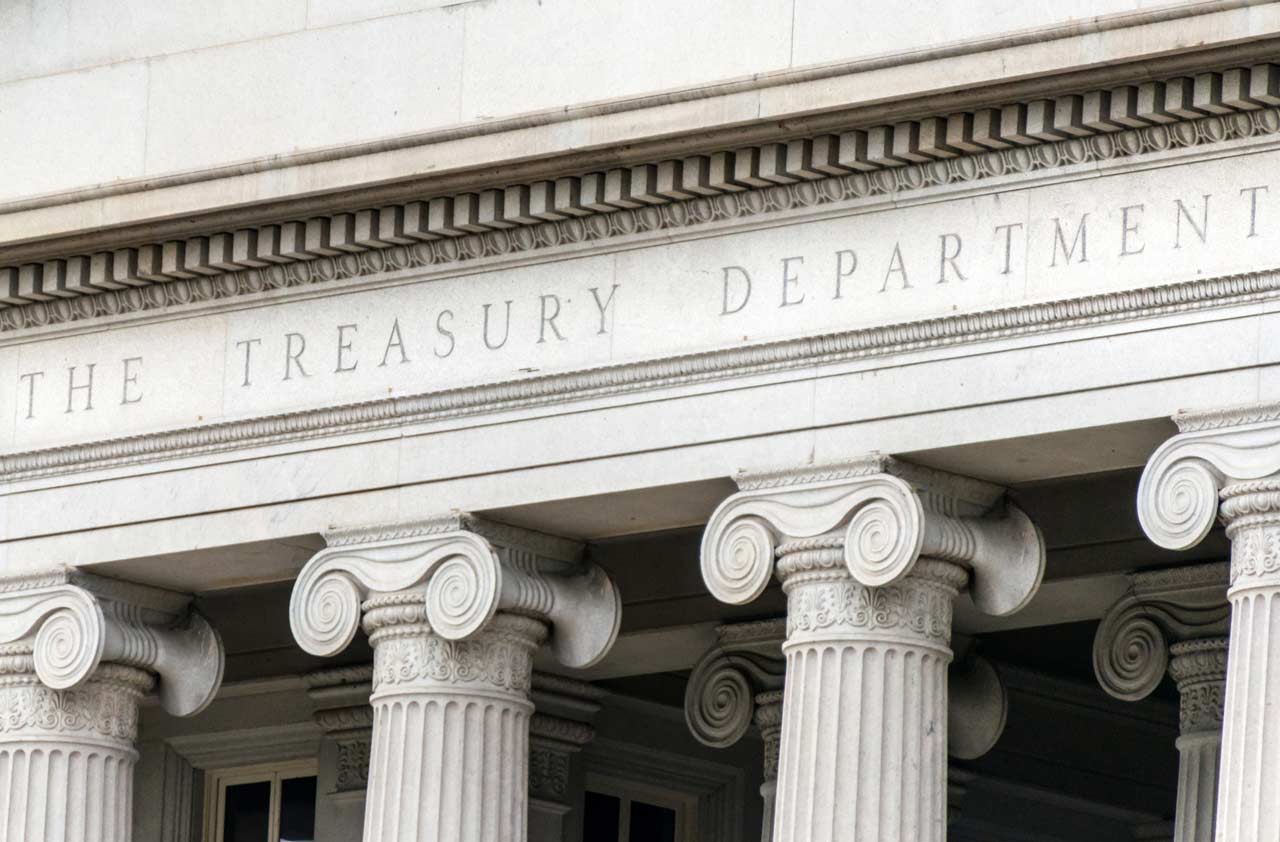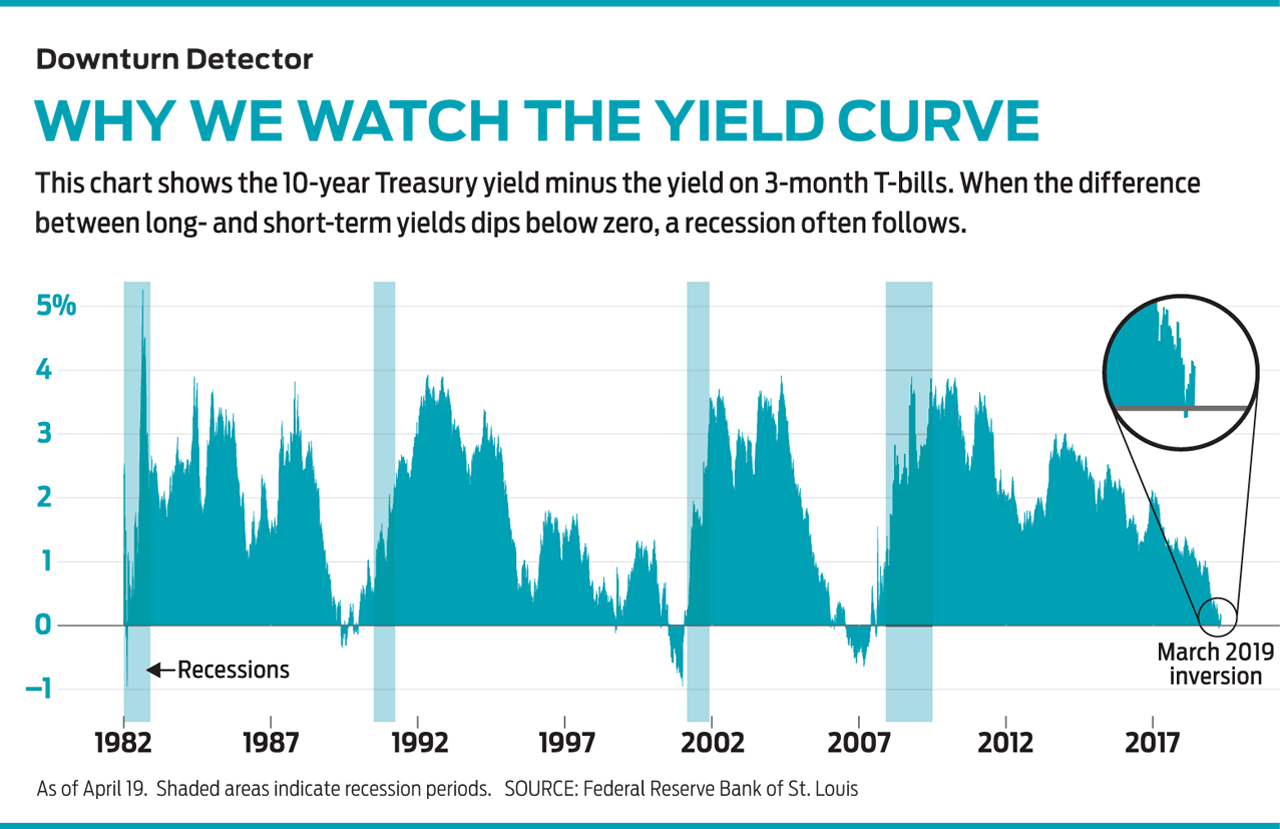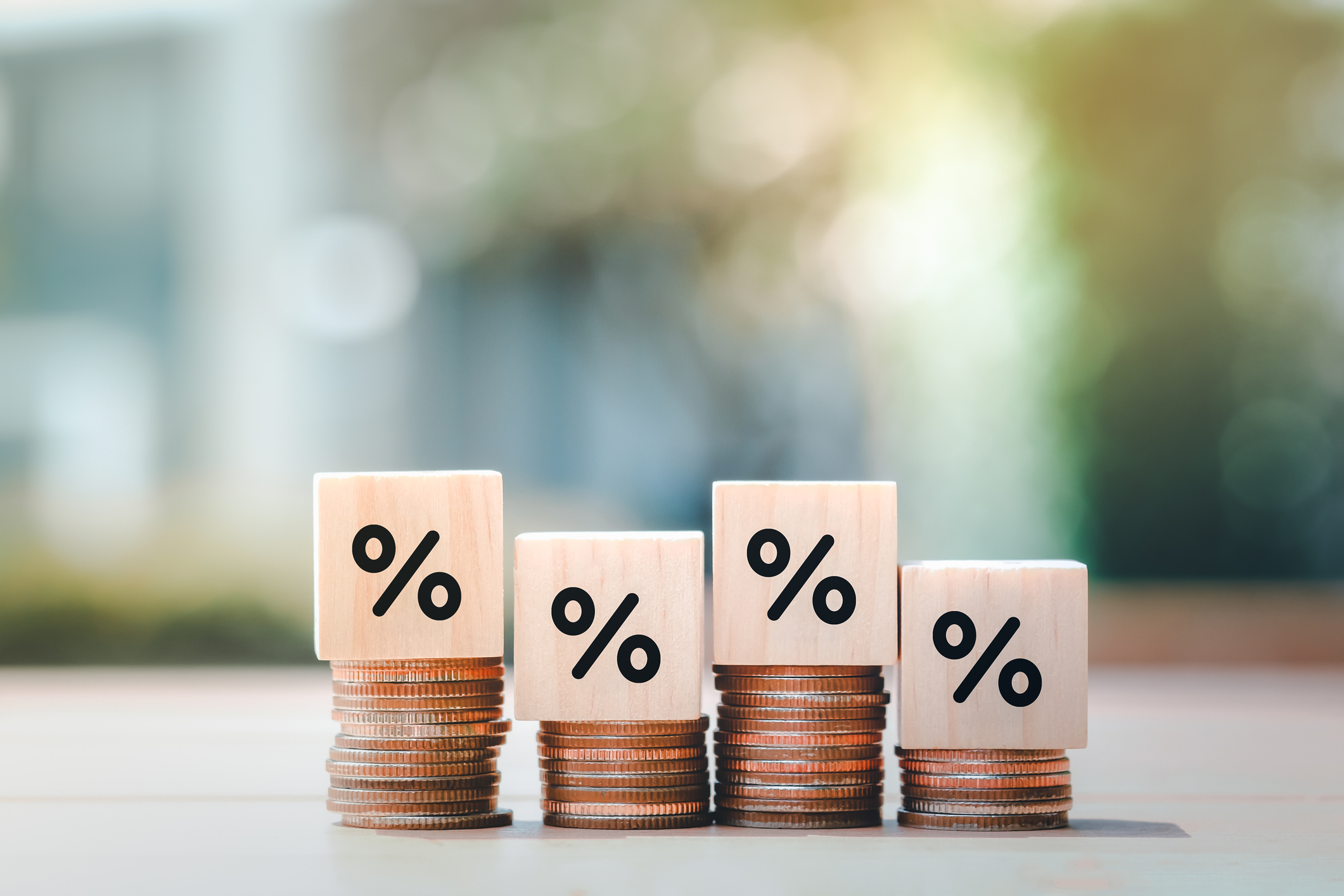Is a Recession on the Way?
The recent dip in long-term bond yields below short-term yields isn't cause for panic.


Market watchers broke into a collective sweat recently when the yield on 10-year Treasuries sank below the 3-month T-bill yield. When yields on short-term debt exceed those on longer-term bonds, the yield curve—a representation of interest rates on bonds of varying maturities—is said to be inverted. A little perspiration is understandable: An inverted yield curve has preceded each of the past seven recessions, dating back to the mid 1960s.

An inversion is considered a recession indicator because although short-term rates are driven by current Federal Reserve policy, longer-term rates reflect bond investors’ expectations for inflation and future economic growth. When investors believe that the economy will weaken, they tend to pile into the safe haven of longer-term Treasuries, locking in higher rates while they can. In doing so, they bid up the price of long-maturity bonds, driving down yields (bond prices and yields move in opposite directions). A yield curve inversion is an extreme, and rare, no-confidence vote.
As with any economic bellwether, the yield curve isn’t foolproof. Although all recessions since the ’60s have followed inversions, not all inversions have led to recessions. And there is little predictability as to when a recession will hit or how long it will last. Since 1968, the time between the inversion and eventual recession has ranged from five to 16 months.
From just $107.88 $24.99 for Kiplinger Personal Finance
Become a smarter, better informed investor. Subscribe from just $107.88 $24.99, plus get up to 4 Special Issues

Sign up for Kiplinger’s Free Newsletters
Profit and prosper with the best of expert advice on investing, taxes, retirement, personal finance and more - straight to your e-mail.
Profit and prosper with the best of expert advice - straight to your e-mail.
Moreover, March’s inversion wasn’t severe (a difference of only a few hundredths of a percentage point) or long-lasting (it has since flipped back). Should the long end dip more than 0.5 percentage point below the short end, it would be cause for greater concern, says LPL senior market strategist Ryan Detrick.
Whether the recent inversion is a blip or a harbinger of recession remains to be seen. Regardless, investors should consider it a sign that things are closer to the end than the beginning of the economic cycle, says Sam Stovall, chief investment strategist at research firm CFRA. “By July, it will have been the longest economic expansion in history. Things don’t last forever, right?” he says.
Profit and prosper with the best of Kiplinger's advice on investing, taxes, retirement, personal finance and much more. Delivered daily. Enter your email in the box and click Sign Me Up.

Ryan joined Kiplinger in the fall of 2013. He wrote and fact-checked stories that appeared in Kiplinger's Personal Finance magazine and on Kiplinger.com. He previously interned for the CBS Evening News investigative team and worked as a copy editor and features columnist at the GW Hatchet. He holds a BA in English and creative writing from George Washington University.
-
 Visa Stamps the Dow's 398-Point Slide: Stock Market Today
Visa Stamps the Dow's 398-Point Slide: Stock Market TodayIt's as clear as ever that President Donald Trump and his administration can't (or won't) keep their hands off financial markets.
-
 State Tax Changes 2026: Is Your State Cutting Taxes This Year?
State Tax Changes 2026: Is Your State Cutting Taxes This Year?Tax Changes As a new year begins, taxpayers across the country are navigating a new round of state tax changes.
-
 Who Said That? Match the US President to the Quotation
Who Said That? Match the US President to the QuotationWho better to give advice on aging, retirement and finances than a U.S. president? Our short quiz will determine whether you're a history buff or buffoon.
-
 The December CPI Report Is Out. Here's What It Means for the Fed's Next Move
The December CPI Report Is Out. Here's What It Means for the Fed's Next MoveThe December CPI report came in lighter than expected, but housing costs remain an overhang.
-
 How Worried Should Investors Be About a Jerome Powell Investigation?
How Worried Should Investors Be About a Jerome Powell Investigation?The Justice Department served subpoenas on the Fed about a project to remodel the central bank's historic buildings.
-
 The December Jobs Report Is Out. Here's What It Means for the Next Fed Meeting
The December Jobs Report Is Out. Here's What It Means for the Next Fed MeetingThe December jobs report signaled a sluggish labor market, but it's not weak enough for the Fed to cut rates later this month.
-
 The Kiplinger Letter's 10 Forecasts for 2026
The Kiplinger Letter's 10 Forecasts for 2026The Kiplinger Letter Here are some of the biggest events and trends in economics, politics and tech that will shape the new year.
-
 Special Report: The Future of American Politics
Special Report: The Future of American PoliticsThe Kiplinger Letter The Political Trends and Challenges that Will Define the Next Decade
-
 The November CPI Report Is Out. Here's What It Means for Rising Prices
The November CPI Report Is Out. Here's What It Means for Rising PricesThe November CPI report came in lighter than expected, but the delayed data give an incomplete picture of inflation, say economists.
-
 The Delayed November Jobs Report Is Out. Here's What It Means for the Fed and Rate Cuts
The Delayed November Jobs Report Is Out. Here's What It Means for the Fed and Rate CutsThe November jobs report came in higher than expected, although it still shows plenty of signs of weakness in the labor market.
-
 What to Expect from the Global Economy in 2026
What to Expect from the Global Economy in 2026The Kiplinger Letter Economic growth across the globe will be highly uneven, with some major economies accelerating while others hit the brakes.